Question
Issue: How to fix Bluetooth speaker volume control not working in Windows?
Hello. I wanted to use my Bluetooth speakers with Windows but I can't change the volume. What should I do?
Solved Answer
dIt can be a frustrating experience for users when the volume control for Bluetooth speaker stops working in Windows. This problem can occur for a variety of reasons, including outdated or corrupted Bluetooth drivers,[1] conflicting audio settings, or the Windows “Absolute Volume” feature.
The inability to adjust the volume on a Bluetooth speaker can have a variety of consequences for users. It can, for example, make it difficult to hear audio clearly, particularly if the volume is set too low or too high. This is especially problematic when users need to listen to audio at specific volume levels, such as during online meetings, video conferences, or while watching movies or playing games.
Furthermore, being unable to control the volume on a Bluetooth speaker can result in missed notifications or alarms, which can be inconvenient or even harmful in some cases. For example, if the volume on a Bluetooth speaker is set too low and a user misses an important phone call or message, it can result in missed opportunities or even danger.
Updating Bluetooth drivers, adjusting audio settings, disabling the “Absolute Volume” feature, and resetting the Bluetooth speaker are all possible solutions to the volume control issue on a Bluetooth speaker in Windows. This guide will walk you through 7 steps that should help you fix Bluetooth speaker volume control not working in Windows.
If you want to avoid a lengthy troubleshooting process, you can try a maintenance tool like FortectMac Washing Machine X9 that can fix most system errors, BSODs,[2] corrupted files, and registry[3] issues. Otherwise, follow the step-by-step instructions provided below.

Method 1. Run the Bluetooth Troubleshooter
- Click on the Windows Start button on the bottom left corner of the screen.
- Type Settings in the search bar and click on the Settings app that appears.
- In the Settings window, click on the System option.
- From the left sidebar, select Troubleshoot from the list of options.
- On the right side of the window, scroll down to find the Bluetooth option and click on it.
- Click on the Run the troubleshooter button.
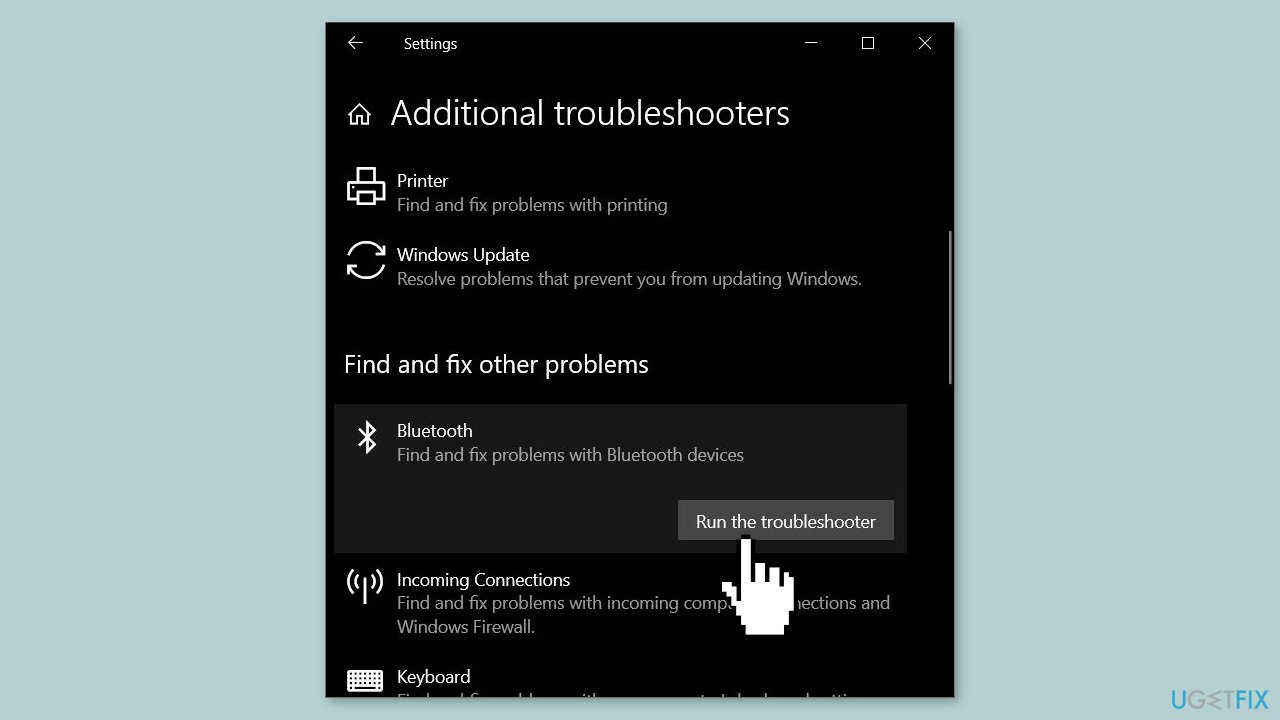
- The Bluetooth troubleshooter will now start scanning for any issues with Bluetooth on your computer.
- If the troubleshooter finds any issues, it will provide suggestions for resolving them. Follow the prompts to resolve the issue.
- Once the troubleshooting process is complete, close the troubleshooter window.
Method 2. Set the Bluetooth Speaker as Default Device
- Open the Control Panel.
- In the Control Panel search bar, type sound and press Enter.
- From the search results, click on the Sound option.
- In the Sound dialog box that appears, select the Playback tab.
- Right-click on your Bluetooth speaker from the list of available devices.
- From the context menu, select Set as Default Device.
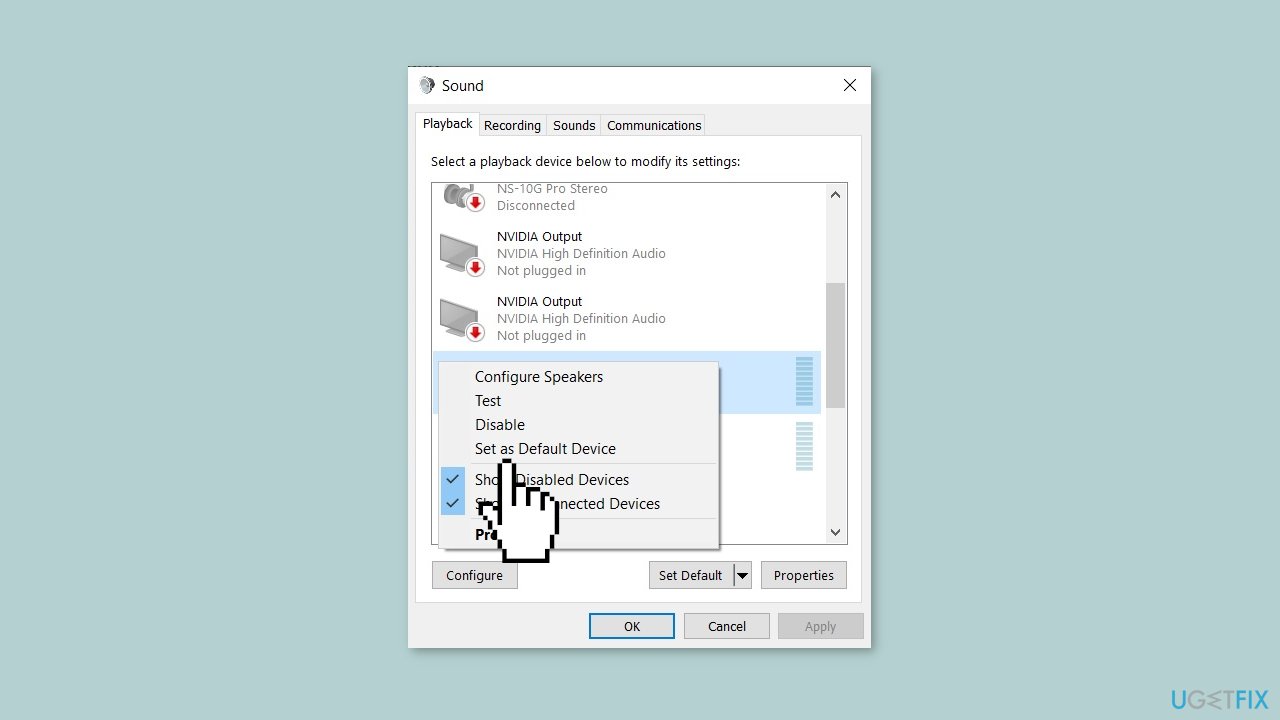
- Click Apply and then click OK.
Method 3. Roll Back or Reinstall Bluetooth Adapter
- Click on the Windows Start button on the bottom left corner of the screen.
- Type Device Manager in the search bar and click on the app that appears.
- In the Device Manager window, locate the Bluetooth category and expand it.
- Right-click on your Bluetooth adapter and select Properties from the context menu.
- In the Properties window, click on the Driver tab.
- Click on the Roll Back Driver button.
- Select a reason for rolling back the driver and click Yes to confirm the action.
- The previous driver version for the Bluetooth adapter will be installed.
- Once the rollback process is complete, close the Properties window and Device Manager.
If rolling back the driver did not resolve the problem, reinstall it:
- Open Device Manager, locate the Bluetooth category, and expand it.
- Right-click on your Bluetooth adapter and select Uninstall device from the context menu.
- Check the box that says Delete the driver software for this device and click Uninstall.
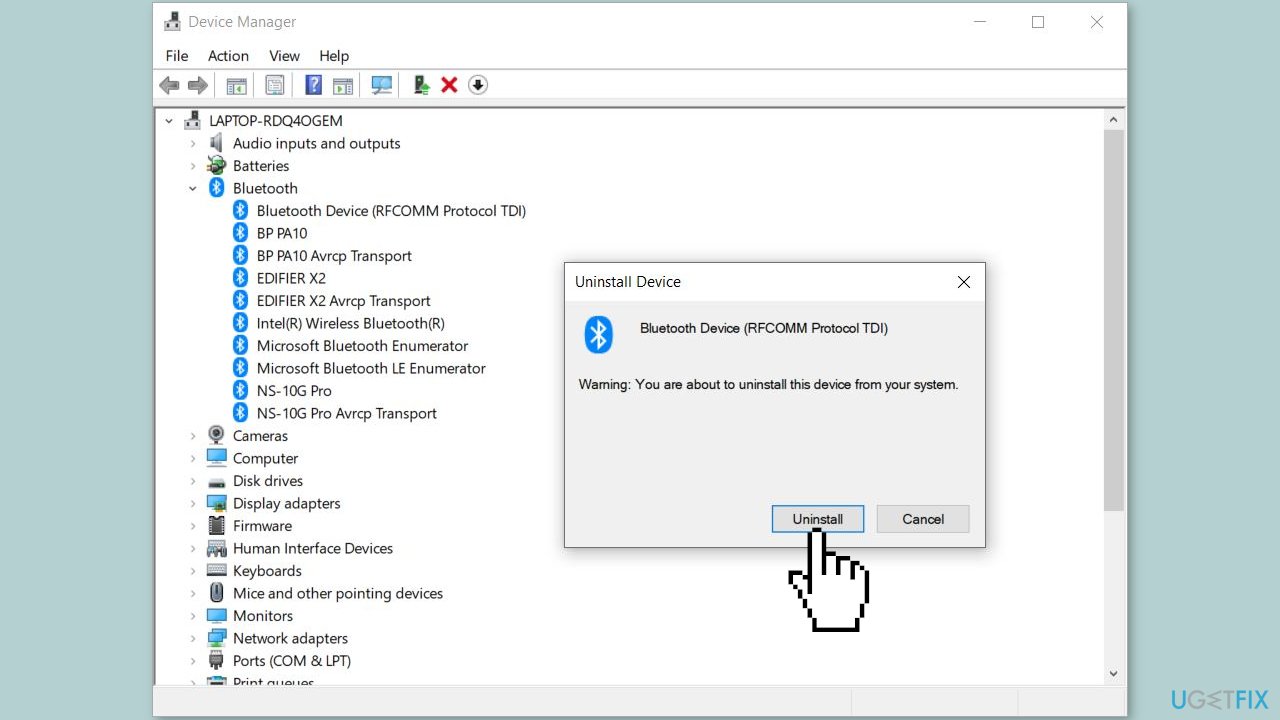
- Once the adapter is uninstalled, click on the Action menu at the top of the Device Manager window.
- Select Scan for hardware changes from the dropdown menu.
- Windows will now automatically detect the Bluetooth adapter and install the necessary drivers.
- Once the installation process is complete, check if the Bluetooth adapter is working correctly.
Method 4. Uninstall the most recent Windows update
- Click on the Windows Start button on the bottom left corner of the screen.
- Type Control Panel in the search bar and click on the app that appears.
- In the Control Panel window, click on the Programs option.
- Select Programs and Features from the list of options.
- From the left sidebar, click on the View installed updates link.
- Locate the most recent Windows update that you want to uninstall from the list of updates installed on your system.
- Click on the update to select it, and then click on the Uninstall button at the top of the list.
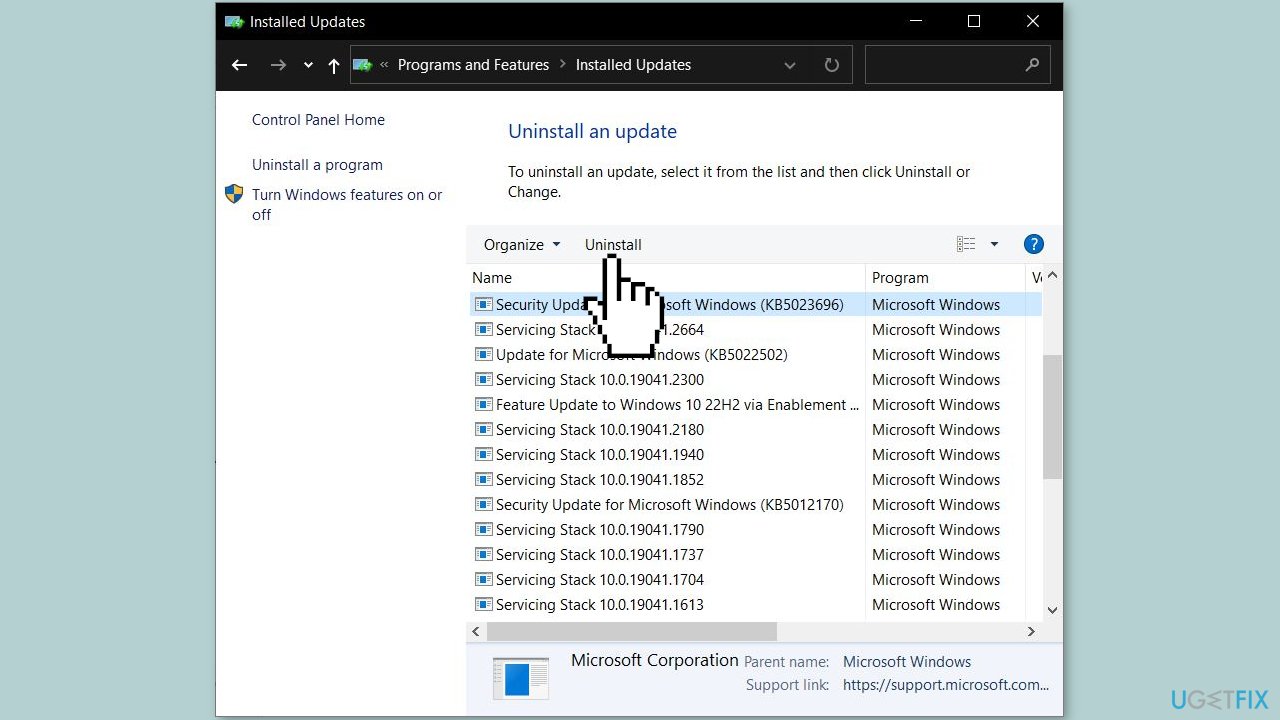
- Follow the prompts to complete the uninstallation process.
- Once the update is uninstalled, restart your computer.
Method 5. Reconnect the Bluetooth Speaker
- Open Settings on your Windows PC.
- Go to the Bluetooth & devices section.
- Select the Bluetooth device that you want to remove.
- Click on the Remove device option to remove the device from your system.
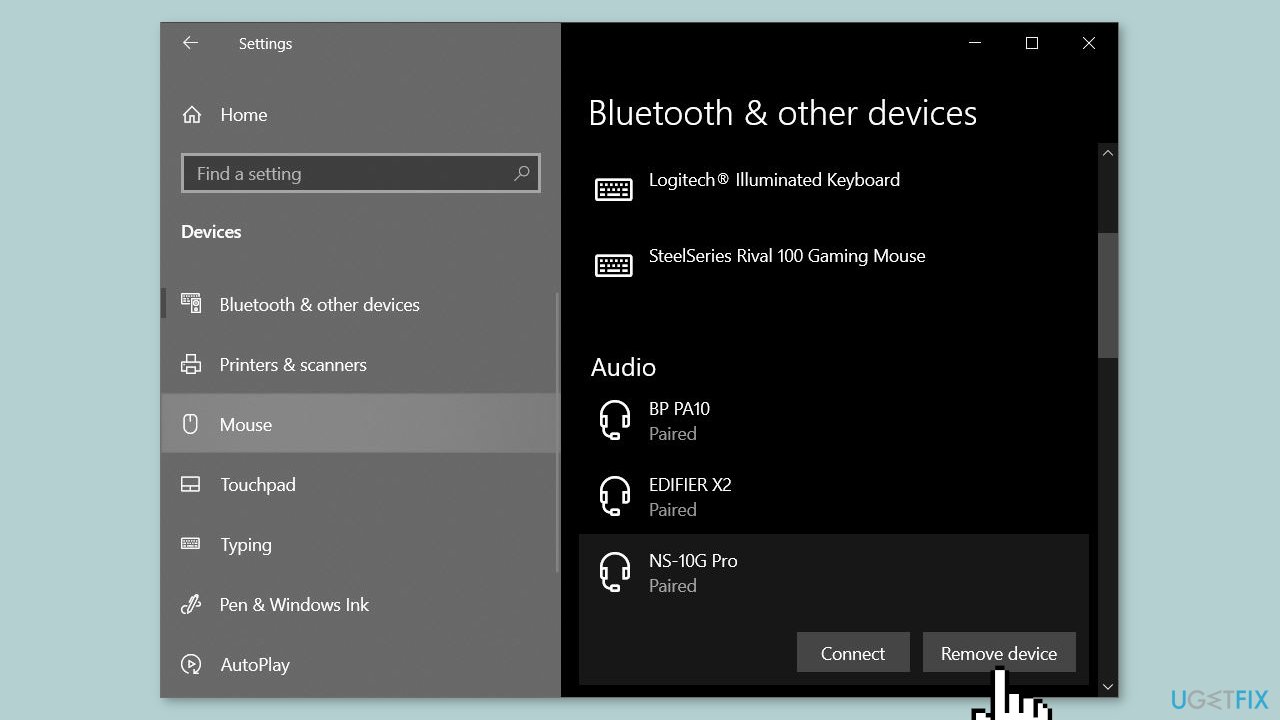
- Restart your computer to ensure that any residual files are removed.
- Add your Bluetooth device again by going to the Bluetooth & devices section.
- Click on the Add Bluetooth or other device option.
- Follow the on-screen instructions to pair and connect your Bluetooth device.
Method 6. Check the Bluetooth Support Service
- Open the Services app by pressing the Windows key + R to open the Run dialog box. Then, type services.msc and press Enter.
- Locate the Bluetooth Support Service from the list of services.
- Right-click on the service and select Start if it is stopped. If the service is already running, select Restart from the right-click context menu.
- Now, double-click on the Bluetooth Support Service to open its Properties.
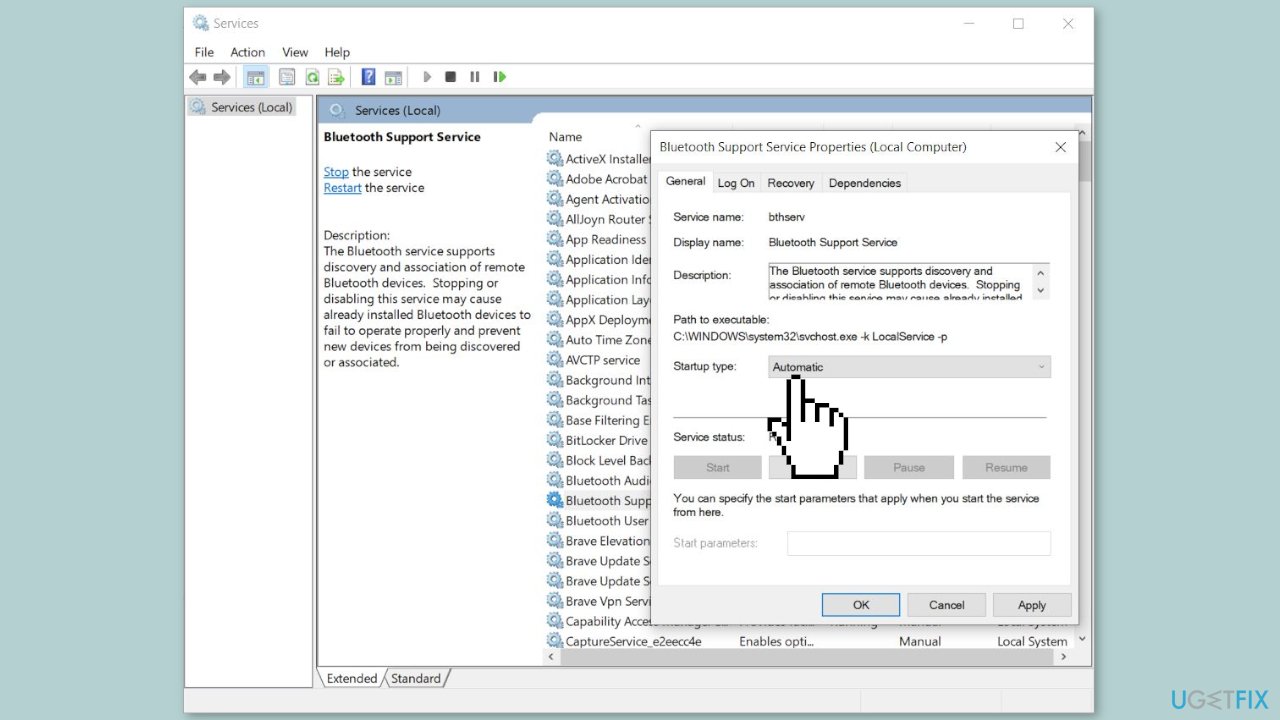
- Select the General tab from the top of the window.
- Set the Startup type to Automatic from the drop-down menu.
- Click Apply and then click OK to save the changes.
Method 7. Disable Absolute Volume
Absolute Volume is a Windows feature that gives users more control over the volume of their Bluetooth speakers or headphones. While useful, it can cause issues on some Bluetooth devices, making it impossible to adjust the volume for individual left and right channels. If you're experiencing problems with your Bluetooth device, disabling this feature can help.
- Press the Windows key + R to launch the Run dialog box.
- Type regedit.exe in the empty field of the box and press Enter to open the Registry Editor.
- Navigate to the following path address in the Registry Editor: HKEY_LOCAL_MACHINE\SYSTEM\ControlSet001\Control\Bluetooth\Audio\AVRCP\CT
- In the right pane, look for the entry called DisableAbsoluteVolume.
- If you cannot find this entry, you can create it. To do so, right-click the CT key and select New > DWORD (32-bit) Value. Assign this key the name DisableAbsoluteVolume.
- Double-click on the DisableAbsoluteVolume entry and set its value to 1. The default value is 0.
- Restart your system to apply the changes.
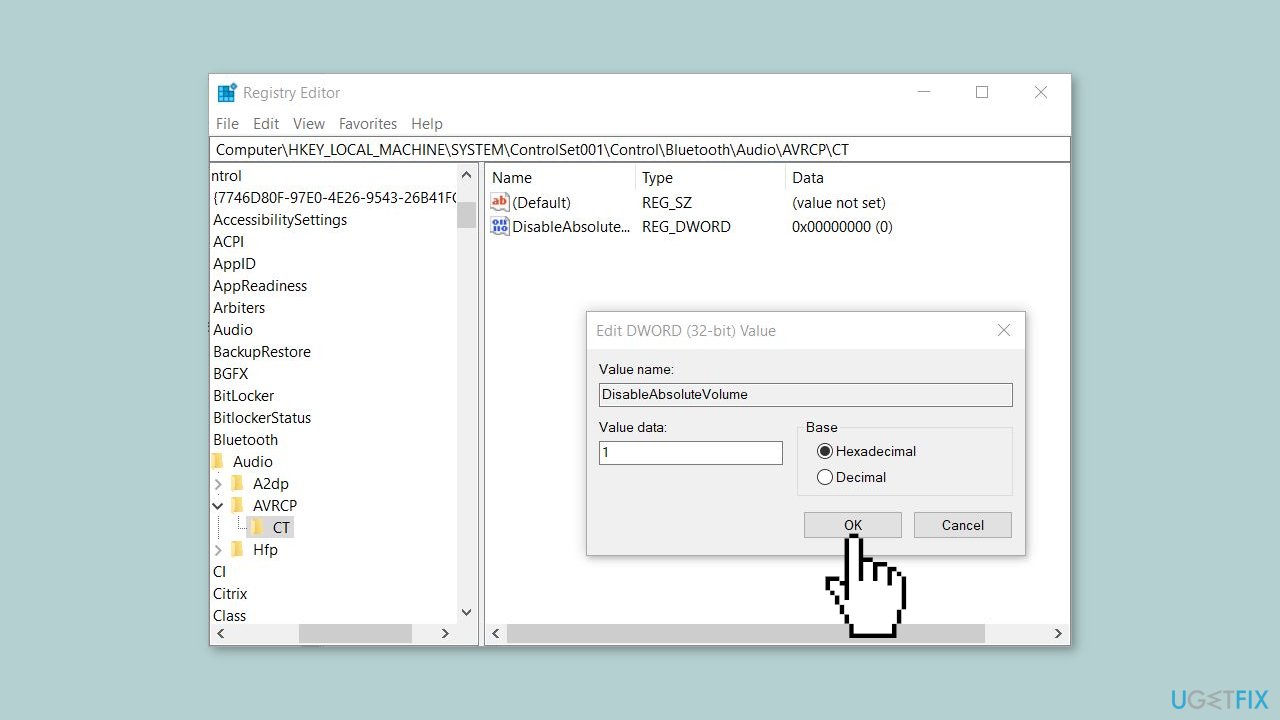
Repair your Errors automatically
ugetfix.com team is trying to do its best to help users find the best solutions for eliminating their errors. If you don't want to struggle with manual repair techniques, please use the automatic software. All recommended products have been tested and approved by our professionals. Tools that you can use to fix your error are listed bellow:
Protect your online privacy with a VPN client
A VPN is crucial when it comes to user privacy. Online trackers such as cookies can not only be used by social media platforms and other websites but also your Internet Service Provider and the government. Even if you apply the most secure settings via your web browser, you can still be tracked via apps that are connected to the internet. Besides, privacy-focused browsers like Tor is are not an optimal choice due to diminished connection speeds. The best solution for your ultimate privacy is Private Internet Access – be anonymous and secure online.
Data recovery tools can prevent permanent file loss
Data recovery software is one of the options that could help you recover your files. Once you delete a file, it does not vanish into thin air – it remains on your system as long as no new data is written on top of it. Data Recovery Pro is recovery software that searchers for working copies of deleted files within your hard drive. By using the tool, you can prevent loss of valuable documents, school work, personal pictures, and other crucial files.
- ^ Device driver. Wikipedia, the free encyclopedia.
- ^ Chris Hoffman. Everything You Need To Know About the Blue Screen of Death. Howtogeek. Tech Insight Magazine.
- ^ Tim Fisher. What Is the Windows Registry?. Lifewire. Software and Apps.



